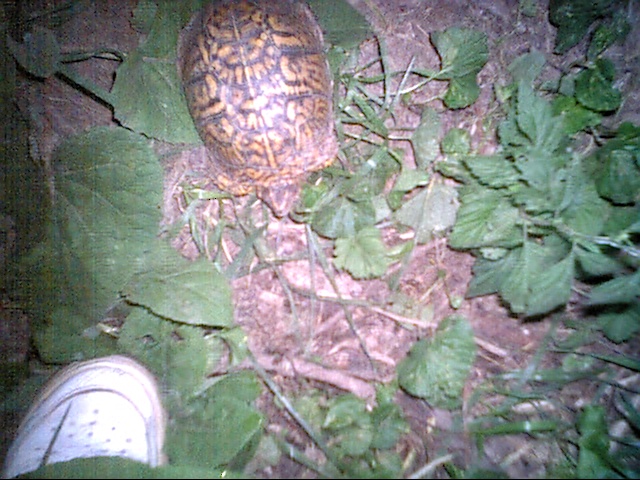|
|
|
Basic info
Most box turtles are 5-6 inches long.Early spring and sometimes into early summer are the normal breeding times for box turtles. Females normally lay their eggs May through July. 2-8 eggs may be laid, though 4-5 eggs are the average. Larger females may lay larger clutches than smaller females. 75-90 days is typical for box turtles eggs to incubate and hatch. Clutches laid late in the season may see the hatchling turtles remaining in the nest to over winter (in northern areas) and emerge the following spring. Box turtles mature around 10 years of age. If you are going to allow your turtles to hibernate outside naturally you will need to provide enough loose dirt, loam, leaf litter, compost, and straw for the turtle to bury down in to escape the cold temperatures and frost. Some turtles will go down as far as 18 inches deep. Turtles native to southern areas should not be hibernated outside in northern areas, but rather indoors in a place like a basement or garage to keep the temperature from dropping dangerously low. They still will need the appropriate substrate mixture to bury down in.
|
|
|
Habitat
North American box turtles live in a wide variety of places like oak and hickory woodlands, grasslands, river-bottom land, pastures, fields, meadows, forests, dunes, and in pond, marshy or swampy areas.
|
|
|
Male or female?
Male box turtles about 90% of the time are found to have red or orange irises, while females usually have yellow or brown irises. Sometimes eye color may not determine the gender of a turtle. Males and females have been found with opposite eye colors as well as green and white irises. Another way to tell the gender of a box turtle is to look at the lower half of the bottom shell. Males will have a concave bottom shell, while females will have a flat or slightly pushed out bottom shell. Even the shape of the turtle's shell might help determine the box turtle's gender. Females typically have shells that are higher domed and rounder in appearance males seem to have a lower shell height and more oval appearance.
|
 |
Food
Box turtles are mostly omnivorous. When young they are chiefly carnivorous, and as they mature and grow they begin to include plant based foods into their diet. They do not switch to an all plant diet, as some people believe. Animal based food sources include, but are not restricted to: snails, slugs, worms, insects of all kinds, crayfish, spiders, millipedes, frogs, salamanders, lizards, snakes, smaller turtles, small mammals, and ground nesting birds. Sometimes they may be seen feeding on carrion rather than actually hunting various animals down. Box turtles have been seen attacking small birds and their eggs/babies. Plant based food sources include, but are not restricted to: sub-aquatic herbaceous plants, strawberries, blackberries, blueberries, mulberries, may apples, mushrooms, dandelions, pigweed, and various vegetables from raided vegetable gardens.
|
|
|


